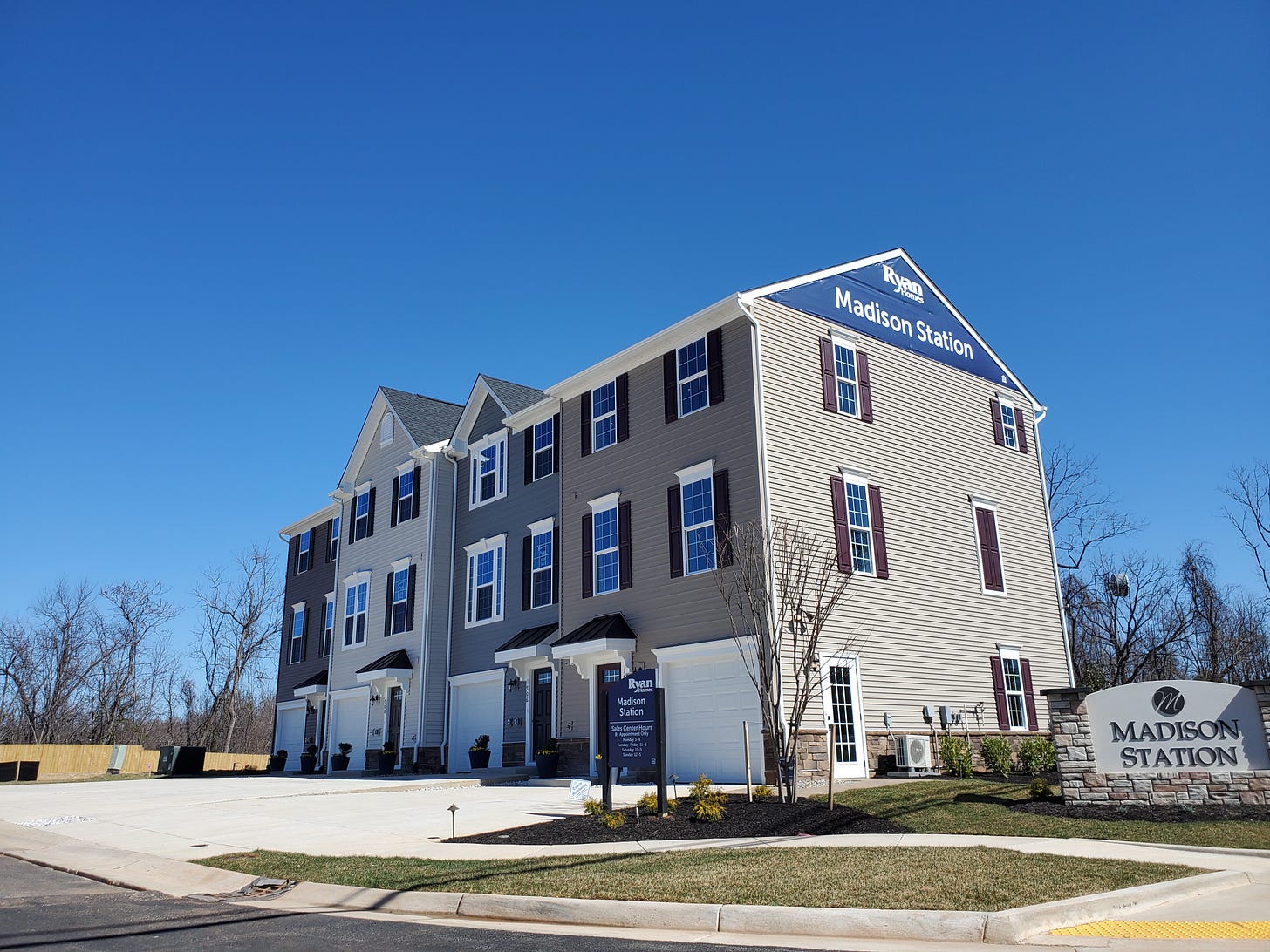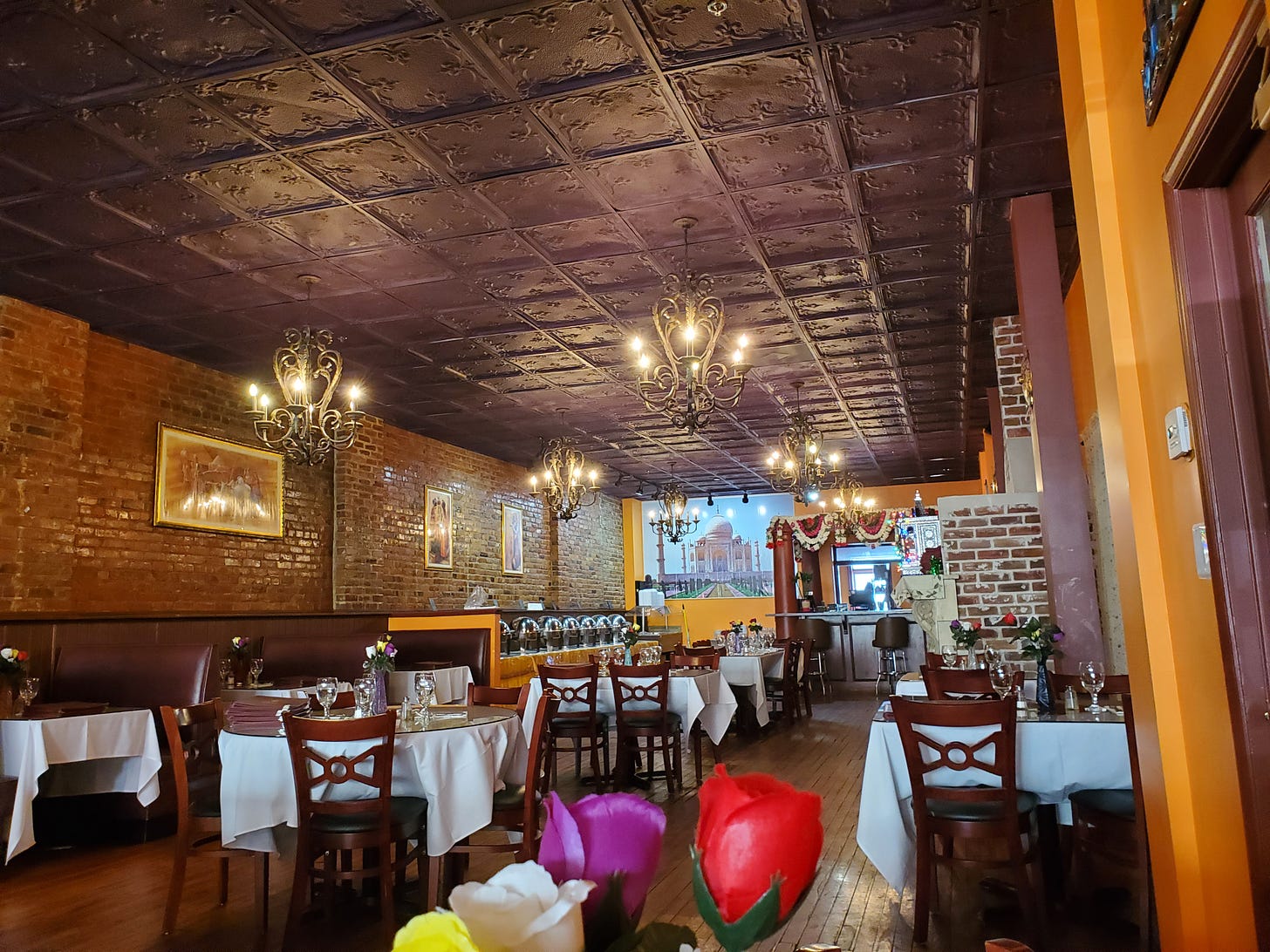I wrote a couple of weeks ago about Culpeper, Virginia, a lovely, classic small town with a low-intensity but deeply urban downtown. My photo essay was kind of high level, mostly talking about the land use, the grand buildings, and the sense of energy that these small towns had in their heyday:
Culpeper, at first glance, is a railroad town; its rail line, opened in the late 1840s and still in service, not only carries freight, but is part of Amtrak. The train station now also houses a small visitor’s center and museum. Small-town museums are a beautiful thing. They illustrate how these small places still had civic, business, and community institutions. They had a deep sense of place, identity, and local patriotism. Churches, banks, courthouses, memorial plaques, clocks, fountains. In many ways small towns all “look the same.” But it’s a sameness we like….
Remarkably, Culpeper and its core downtown were already a century old by the time the Civil War broke out. Culpeper, originally a compact 10-block settlement, dates all the way back to 1759, when the town was chartered. Its origin goes back a decade earlier—to 1749, when a 17-year-old George Washington was commissioned to survey and plot both the town and the eponymous county.
This suggests that America’s heritage is both rural/agricultural and urban—neither the modern muddle of suburbia, nor the rural half only, into which suburbia is conceptually shoehorned. This sharp contrast between the dense urban settlement and the surrounding unbuilt countryside was the norm, going back to the country’s inception.
But I also want to share a more casual dispatch from my little road trip.
First, on my way down, somewhere in Fauquier County a little past Warrenton, I passed a couple of houses with signs in the front yard reading “STOP AMAZON, STOP THE TOWERS.”
I almost always stop and write these slogans down, to go back and see what they’re about. “Are they really proposing high-rise towers out here?” I wondered. I looked it up and I found an article about it, containing this sentence: “You will be forever changing the look and feel of this county and this small town that we treasure.”
It’s interesting. I think it’s easy to read that and think, “If these NIMBYs are grousing about something changing the ‘look and feel’ of some place, maybe it’s a good thing!” I think so much exposure to opposition can harden our own opinions.
But this has nothing to do with housing. It turns out the “towers” are transmission line towers—power lines—proposed to power a big Amazon data center. Maybe that isn’t a good land use for a rural-exurban county; I’d tend to think so. Loudoun County is already full of these things: big, boxy, blank, windowless concrete structures. They’re industrial buildings, and unlike, say, a warehouse full of stuff that has to get delivered, data doesn’t care if its in Loudoun or a few dozen miles south. I guess I’m NIMBY for some things.
I also passed this quaint old motel, which I wanted to photograph on the way back. I took a different route home, so Google Maps will have to suffice:
It is, apparently, permanently closed, which explains why I wasn’t able to find it when I searched “motel” on Google Maps. Instead I had to Google “Fauquier County motels” and search the image results until I recognized one of them as the place I’d seen. These places will come and go from the internet, and they’ll still be standing, that signpost and midcentury stone styling looking like the day it was put in.
There isn’t very much between Warrenton and Culpeper, except the occasional housing development. It’s mostly the countryside, and some smaller, older houses from a time when there were probably fewer cars on these roads. And some roadside stores and gas stations; this is the major route to Charlottesville, not a country road.
There’s a cool visual I had no room to pull over for and photograph on the way into Culpeper; a couple of silos, towering over the fields and the highway, creating a kind of rural skyline. Something like this, but Google Maps can never do these images justice:
You might think a countryside and small-town landscape roughly 75 miles from the nearest urban core (D.C., not the much smaller but closer Charlottesville) would finally be outside the orbit of the D.C. metro area. But not quite.
I passed, in addition to some of those new housing developments, the Brandy Station Commuter Lot, which is apparently used to carpool or catch buses in the D.C. direction (or, one user noted in Google reviews, to Danville.) Front Royal, a similarly distant small city, has a D.C.-bound commuter bus that leaves around 4am (or at least it did pre-pandemic.) These places were once far outside the D.C. orbit, but now they’re also roped into a final exurban ring.
It reminds me of this bit from a piece I wrote after visiting Frederick, Maryland with a friend, and how for an older generation of locals, these cities really have nothing to do with Washington, D.C. at all:
We escaped the Bible lecture. A block or two later, a man on his way into a pawn shop I hadn’t realized we were standing in front of mistook us for a couple and asked—perhaps because he intuited we were not from the area—if we were looking for an apartment. I explained we were just visiting, and he began to speak at some length about nice restaurants for dinner, a shop where I could buy my “girlfriend” some jewelry, and Thurmont, an escape from the city 25 minutes north. (Frederick, I replied, is almost an escape from the city for me! I recall a horseback riding instructor in Winchester, Virginia who recounted that his daughter looked forward to moving to “the city”—that is, Fredericksburg.)
Here’s the newest housing development in Culpeper, on the edge of town, and still under construction:
Ryan Homes advertises them as starting from the low $300s, which for anywhere in the vicinity of Northern Virginia is quite affordable, especially for new construction. Maybe some locals move into these, though they’re probably mostly bought by people who moved from the D.C. area. At some point, I guess, they become locals too; it’s wise to not overthink these things.
In my original Culpeper photo essay, I didn’t show you the stores. Or lunch. I wanted to try Culpeper’s Indian restaurant, which has very good online reviews. Also, I missed Calhoun’s Ham House, which gives me a reason to go back. They make their own country ham, a Virginia delicacy that’s sort of the American version of prosciutto. Their webpage shows hams hanging in a cellar, which looks just like a prosciutto aging facility my wife and I saw in Parma, Italy!
Here’s the Indian restaurant. A few people also said the Thai restaurant is good. There are a couple of classic American diner-type places too. You’d have no trouble choosing a place to eat. (There was a right-wing talk radio show playing on the radio in the Indian restaurant! That’s not what I’d expect to hear.)
Plus an old-school bakery, a European chocolate shop, a cheese and charcuterie shop, a wine store, and an oil and vinegar tasting room.
And I brought home a little bit from almost every store!
It’s a really lovely town. All it could use is a downtown grocery store, and/or some other everyday businesses. But that’s the way it is in most small towns these days. Interestingly, some suburban supermarkets on the edges of small towns can actually trace their existence back to Main Street: they just got larger and moved away over the decades. My own hometown’s major supermarket began in the postwar years on Main Street. It’s tough to get that back, though, because the whole business of retail has changed, in ways that go beyond land use.
On my ride home, I pulled over for this A-frame post office, and snapped a picture of an abandoned building—church? banquet hall?—next door.
Sadly, there’s only a little vestibule with a false ceiling visible to the customer inside.
I also stopped at a little farm market store, the kind with some local meats and cheeses and a lot of jarred Amish preserves and pickles which might not strictly be Amish. They had these too, which I’ve never seen before—big pastry bags of pie or turnover filling!
There’s so much to see. I could just about write this piece again with different notes and photos. I don’t know, maybe I will.
Related Reading:
Road Diary: More on Southern Maryland
Thank you for reading! Please consider upgrading to a paid subscription to help support this newsletter. You’ll get a weekly subscribers-only post, plus full access to the archive: over 600 posts and growing. And you’ll help ensure more material like this!















Right wing talk radio is definitely surprising for the choice of radio station for an entire floor of customers, but not particularly surprising to me that immigrant entrepreneurs would be drawn to that. "You worked hard and now a bunch of entitled lazy whiners who didn't break a sweat while you were worried about making ends meet want to tax it all away from you and make you comply with endless red tape regulation" is a message that is going to resonate strongly with a large number of them. For similar reasons, I'm never surprised when some pro athlete comes out as a big Republican.
I recommend you visit FarmVille (south of Culpepper). It is one of my favorite towns. I’d be interested in what you think